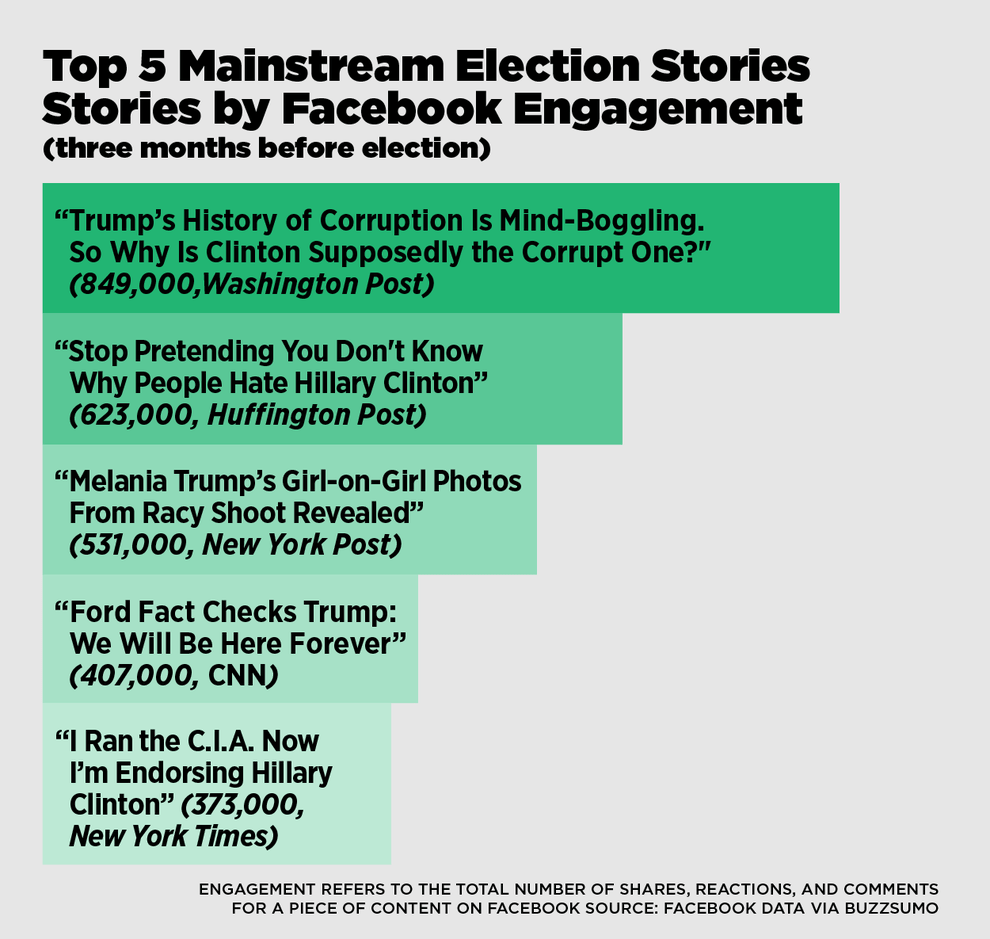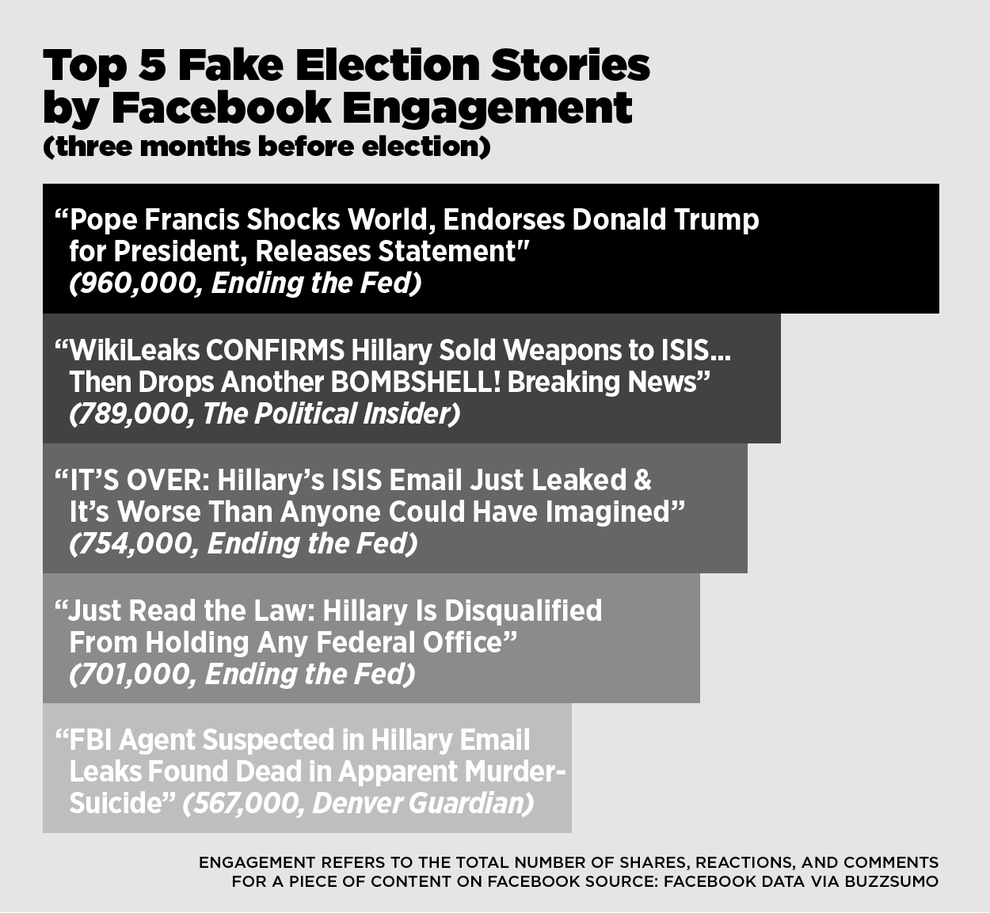"Since the election, BuzzFeed has been pushing the argument that “fake news” shared on Facebook won Donald Trump the White House.
The latest announcement from Facebook shows the listicle king probably used unreliable engagement data to reach that conclusion.
...Unfortunately for BuzzFeed, these flawed metrics were used by in its analysis of how influential fake news stories actually were on Facebook, noted Peterson.
...Unfortunately for BuzzFeed, these flawed metrics were used by in its analysis of how influential fake news stories actually were on Facebook, noted Peterson.
BuzzFeed stacked the engagement numbers from the top 20 performing fake news stories against the top 20 performing mainstream media stories and found that fake stories had significantly more engagement over the last three months of the election.

(Buzzfeed)

(Buzzfeed)
To gather its data, BuzzFeed used two methods.
The first was a full analysis from third party provider, BuzzSumo.
The second, a URL search, which to reiterate, was announced to be faulty by Facebook on Friday morning.
Facebook has stated it is not yet sure if the analytics errors over-inflate or under-inflate the actual engagement data, but that doesn’t change the fact that the numbers BuzzFeed used are blatantly incorrect.
Additionally, this isn’t the first time BuzzFeed’s fake news analysis has proven to be a load of hogwash.
It was recently revealed that its “Most Americans Who See Fake News Believe It” survey used a cheap polling service, with a laughable credibility interval, and a low number of respondents."
The first was a full analysis from third party provider, BuzzSumo.
The second, a URL search, which to reiterate, was announced to be faulty by Facebook on Friday morning.
Facebook has stated it is not yet sure if the analytics errors over-inflate or under-inflate the actual engagement data, but that doesn’t change the fact that the numbers BuzzFeed used are blatantly incorrect.
Additionally, this isn’t the first time BuzzFeed’s fake news analysis has proven to be a load of hogwash.
It was recently revealed that its “Most Americans Who See Fake News Believe It” survey used a cheap polling service, with a laughable credibility interval, and a low number of respondents."
No comments:
Post a Comment